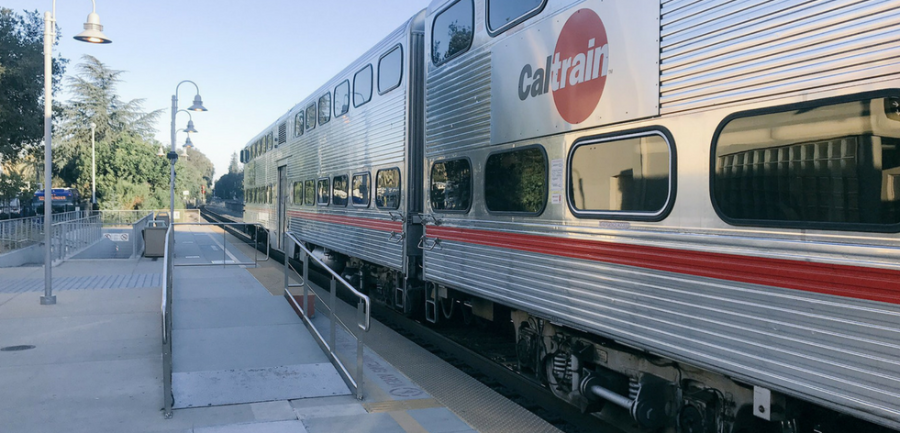Stanford University professionals are set to assist an extensive Caltrain business plan that aims to determine how the transit system should evolve after its electrification, given long-term regional job and population growth.
On Thursday, the Peninsula Corridor Joint Powers Board (JPB), which manages Caltrain, authorized an agreement to have Stanford’s Land, Buildings & Real Estate (LBRE) group assist in the development of the Caltrain Business Plan, which began last year after the agency awarded contracts to replace diesel with modernized electric trains, a project that is expected to be completed in 2022.
“Caltrain Electrification will immediately improve the system’s capacity, service frequency and travel times, but the strategies recommended in the final Business Plan will need to be implemented to fully realize the benefits that electrification makes possible,” the transit agency said.
Stanford’s LBRE group will help in that regard. In what is anticipated to be a year-long process, the JPB is soliciting input from government agencies, community partners, contractors and stakeholders to form a technical and policy document to ponder subjects such as future service levels and patterns, infrastructure needs, organizational strategies and the railroads interactions, benefits and impacts with surrounding communities.
“Stanford is a well-respected institution in our community, and they bring new ideas, resources and perspectives to the conversation,” said JPB Chair Jeannie Bruins. “We welcome the opportunity to work together to create an innovative plan to help shape the future of the Caltrain corridor.”
Robert Reidy, vice president for Stanford’s LBRE group, called Caltrain a “critical component in meeting the region’s transit demands and in managing traffic congestion.”
“We look forward to working with Caltrain to plan for a future of connected, high capacity, and financially and environmentally sustainable rail service that meets regional transportation needs” Reidy said.






